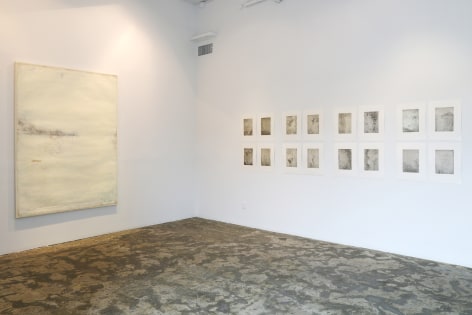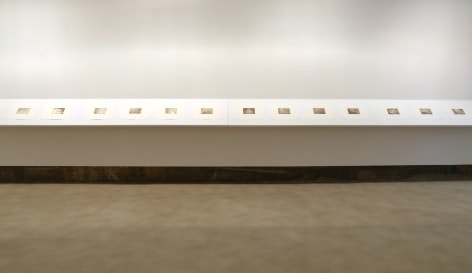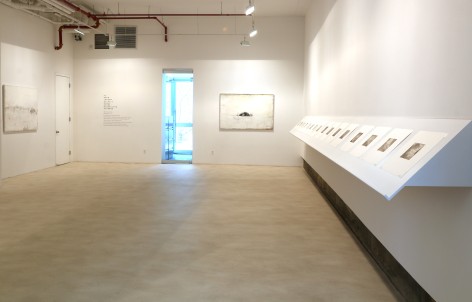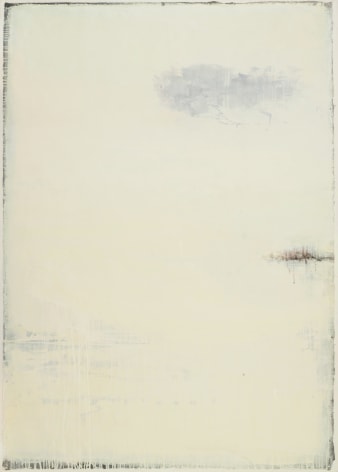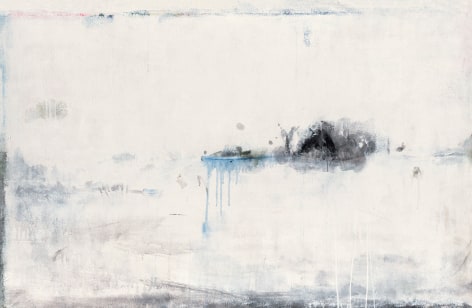Chambers Fine Art is pleased to announce the opening on February 26 of Yan Shanchun: West Lake. Born in 1957 in Hangzhou, Yan graduated from the Printmaking Department of the Zhejiang Academy of Fine Arts (now China Academy of Fine Arts) in 1982, and thus belongs to the generation of artists who were the first to graduate after the academies were closed during the Cultural Revolution (1966-1976).
Hangzhou is commonly regarded as one of the most beautiful cities in China, located in an area of considerable wealth and culture. It is centered on West Lake, a source of inspiration for poets and painters for hundreds of years. Even when he was not living in Hangzhou, memories of the famous lake and celebrated viewing-points never left Yan Shanchun and they became the inspiration for much of his work. Now that he lives and works in Hangzhou he can see the lake whenever he wishes although this is less important to him than his memories of it and its unique position within the history of art in China.
Yan is also well versed in ink painting, traditionally the most highly-regarded medium in China, used equally for painting and calligraphy, as well as classic Chinese poetry which aim not to describe but to evoke through carefully observed details. That being said, Yan wears his learning lightly and the paintings and works on paper are memorable for the manner in which they reveal so much while remaining self-effacing and reticent. Each painting results from the application of multiple layers of pigment, concealing memories of the famous landscape that hover in the background and appear only intermittently. Faint touches of color emerge through translucent veils of white and sometimes along the edges of the canvas, but play only a minor role in the orchestration of the multiple layers and shades of white paint. On occasion he works from more than one side of the canvas, creating a tension between horizontal and vertical drips that provide visible traces of the artist’s working process.
That is not necessarily the end of the extended period of creation as he also likes to complicate the spatial dimension of the works by applying thicker layers of paint applied with a palette knife that partially conceal the shifting veils beneath. At first glance the paintings appear to be pale and bleached, lacking in material substance, but as the observer absorbs the evidence of the artist’s creative procedure and relates the hints of colored surfaces to forms from the real world, they assume a legibility as surprising as it is brief. As in certain works by Cy Twombly, the pale, scuffed surfaces allude to a surprisingly wide range of cultural and historical themes.
Although Yan is fully cognizant of the long history of abstract painting in the West, he has been less concerned with rivaling these antecedents than in modifying their example to enrich the valued tradition of Chinese literati who cultivated the arts of calligraphy, painting and poetry in seclusion. That privileged life-style is no longer possible but in his detachment from the goal-oriented atmosphere of the contemporary art world and in the development of his own quiet poetic sensibility equally attuned to poetry and the visual arts, he may be considered a twenty-first century equivalent of these legendary polymaths.
Accompanying the paintings is a new group of copper plate etchings, a technique that Yan finds to be particularly congenial. Using a mixture of sulfur and olive oil to produce recesses in the copper plate, and printing on Japanese ganpishi paper, Yan creates prints that he describes as having “a luminous, silver-print photography effect, lending the image a heavy, metallic feel similar to how I feel about the West Lake: clear, remote, tempered and classic.” Like the paintings, the etchings are inspired by West Lake but the focus is on evocative details rather than a broader view of the expanse of the lake. In order to appreciate the subtleties of the printing process, Yan encourages the viewer to handle the works in person in order to “read” rather than simply see them.
前波画廊诚挚地宣布将于2015年2月26日起举办展览《严善錞:西湖》。严善錞1957年出生于广州,1982年毕业于浙江美术学院(现为中国美术学院),并由此成为文革后学院开放以后第一批毕业的艺术家。
坐落于富饶繁荣的珠江三角洲地区,杭州通常被认为是中国最美丽的城市之一。城市以西湖为中心,它是数百年来诗人与画家的灵感来源。即使是严善錞不在广州的期间,他也从未停止过对西湖及其盛景的追忆,这些回忆由此成为他大多数作品的灵感。现在,严善錞回到广州,他得以随心所欲领略西湖风光。但是对于严善錞而言,他对西湖的缅怀和西湖在中国艺术史上独树一帜的地位,比他眼见的景色更加重要
严善錞十分精通水墨画,水墨在中国传统中被推崇为最高的艺术媒介,并同时使用于绘画、书法作品、以及传统的中国诗词中,诗词的目的不在于描绘所观察的细节而是从中激发情感。同样的,精通水墨的严善錞并没有刻意关注技法的高超,他的绘画和纸媒作品在表现形式上展现了极强的张力,却也蕴含着谦虚与儒雅的感觉,令人回味。每幅绘画作品得益于他对多层颜料的运用,将其对西湖景色的记忆隐藏在流动的作品背景中,并呈现出破碎离散的视觉效果。画面中半透明的白色纱衣和一些作品的边缘呈现出颜料轻薄的触感,但是这些在多层颜料的交响曲中,以及白色的阴影中,只起到了很小的作用。有时,严善錞会从画面的多个方向开始作画,由此在水平与垂直的笔墨间营造出一种张力,并展示出画家的作画过程。
严善錞也喜欢利用调色刀使用较厚的涂层去局部隐藏流动的薄纱底层,从而复杂其作品的空间维度,因此他延长的作品创作周期并不一定要有一个结束点。第一眼看上去,严善錞的作品有些苍白和平淡,缺少具体物象,但是当观者理解画家在富有创造性的作画过程中留下的线索,并将色块中的暗示与现实世界中的物象相联系,观者将发现这些线索与暗示简洁而令人惊喜的易读性。正如在画家赛扬·托姆布雷的一些作品中,暗淡和磨损的表面机理实则暗喻了令人惊讶的广泛的文化与历史主题。
与绘画作品一起展出的是一组新的“浅腐法”铜板版画作品,严善錞认为这种技巧与其作品风格十分相投。通过使用硫磺粉和橄榄油的混合物在铜板上产生凹槽,并转印在日本雁皮纸上。他的版画正如他自己所描述的那样具有“一种银盐摄影的光泽,使得画面更加厚重且具有一种金属感,也更接加近我自己对西湖的气质的理解:清峻、遥深、温润、古雅”。如同其绘画,版画的灵感也来源于西湖,但是更强调引人共鸣的细节而不是西湖辽阔的宏观感受。为了体会版画制作的精妙,严善錞鼓励观者亲自手持作品欣赏,以“阅读”而非单纯观看作品。

